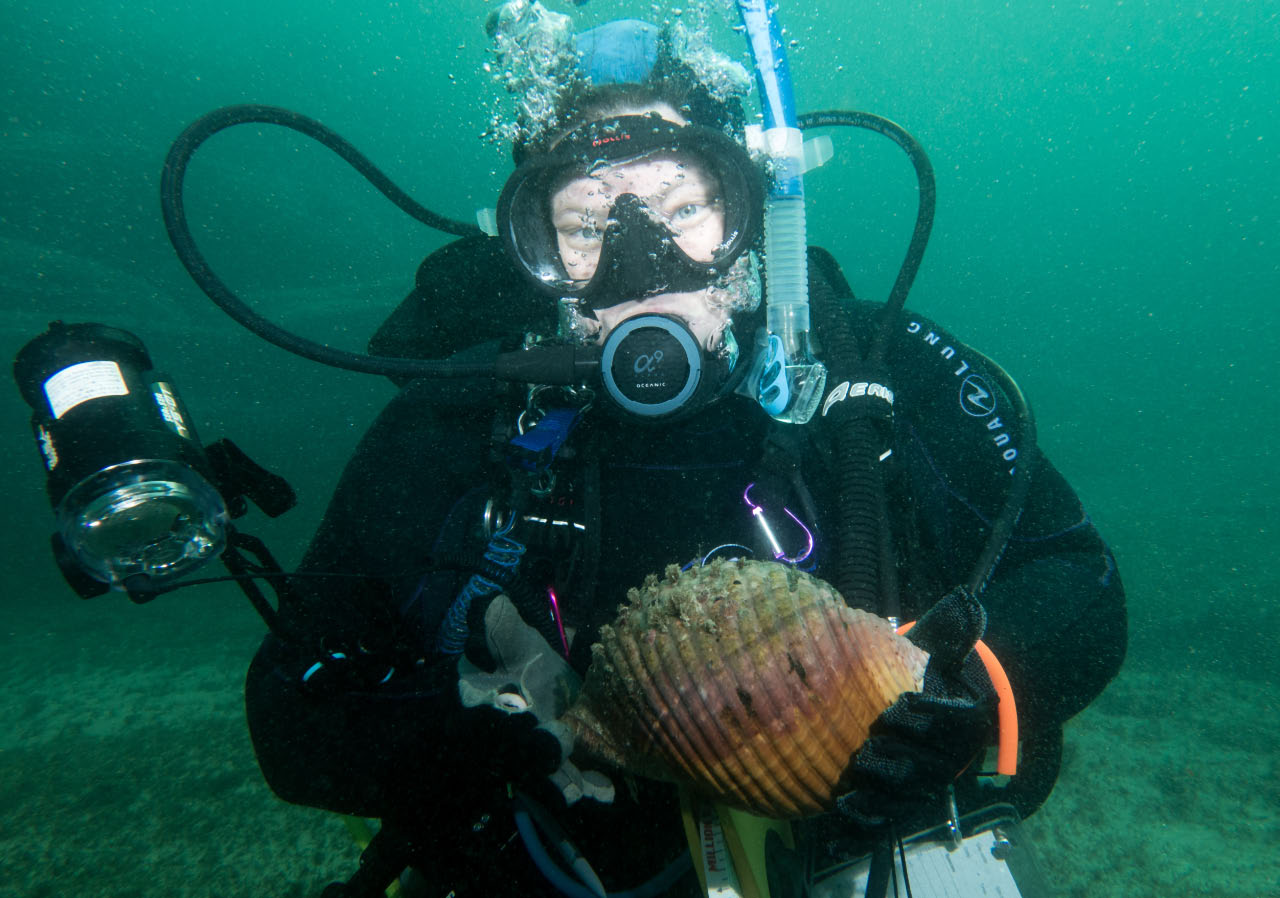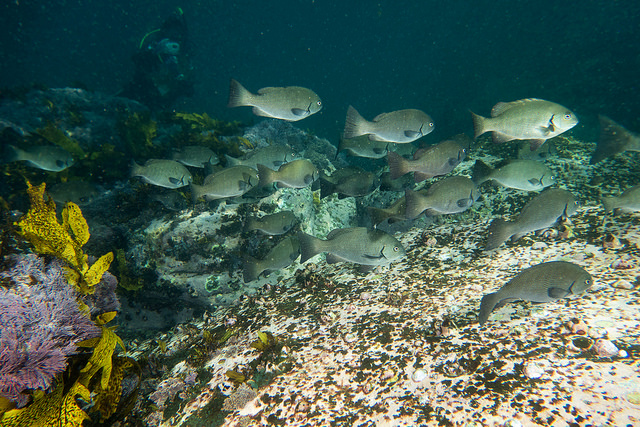Annual intensive reef monitoring in Sydney: Above water, the conditions were spectacular – autumn sun, calm seas and hot soup in the surface interval – what could be better? Underwater we had enough visibility to do our surveys, but only just – thanks to a month of rainy days in Sydney. To make matters worse, over 100 km of Hawkesbury river estuary stood to our west. We had only surveyed the Bouddi National Park Marine Extension once before, in 2015 – and despite the water quality it was worth coming back.
This year we set out to make up for make up for the many sites we missed in 2016 due to rough weather. We’re pleased with the result – despite the rain, we completed 46 surveys across 26 sites, from Shellharbour to Bouddi. We went back to our old favourites, like Shelly Beach and Bare Island, and added repeat surveys to some new sites which we intend to maintain, like Boat Harbour and Cruwee Cove. A big thanks goes to the Underwater Research Group of NSW for organising the surveys; to RLS divers Janet, Michael, Rena, Sophie, Kris, Lou and Martin; and to boat sitters Denise, John and David.

One of the best sites this year – and one of the most surprising – was Oak Park. We were lucky enough to survey it in almost crystal clear water (ok, by Sydney standards), at a time when big schools of scad were moving through. Hundreds of old wives and the biggest live shell I’ve ever seen – a tun shell (Tonna tankervillii), the size of a volleyball, completed the picture.
The most commonly sighted species were:
The most abundant species were:

In terms of fish 20 cm and larger, the most abundant were Yellowtail scad (Trachurus novaezelandiae), Garfish (Hyporhamphus australis) and Long-fin Pike (Dinolestes lewini).
Black urchins averaged 132 animals per survey, more than twice the next most abundant invertebrate, tent shells at 56 per survey.
Some of the more interesting finds were the Thorny-back Cowfish (Lactoria fornasini), a Red Bass (Lutjanus bohar), a Tommyfish (Limnichthys fasciatus), Clown Triggerfish (Balistoides conspicillum), Yellow-tail Puller (Chromis flavomaculata) and a Pheasant Shell (Phasianella ventricosa).
Over the few weeks of surveying we consumed countless hot cross buns, savoury muffins and cups of coffee and towed the URG boat from one end of Sydney to the other. We counted over 40,000 animals and recorded over 200 species of fish and invertebrate, and took almost 1000 photo quadrats. All round it was great fun, made all the more worthwhile by the important information we have now gathered for science.
